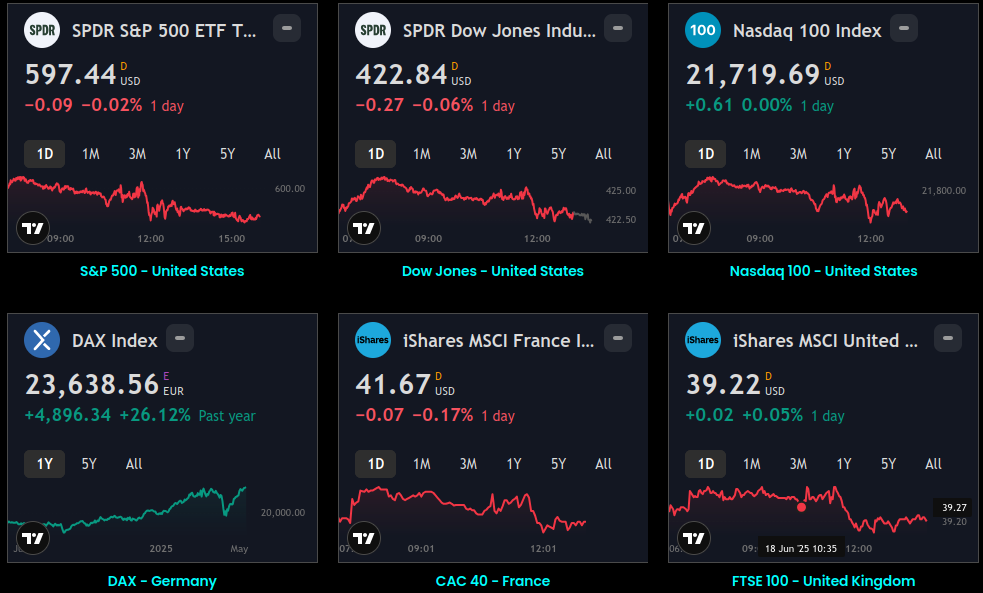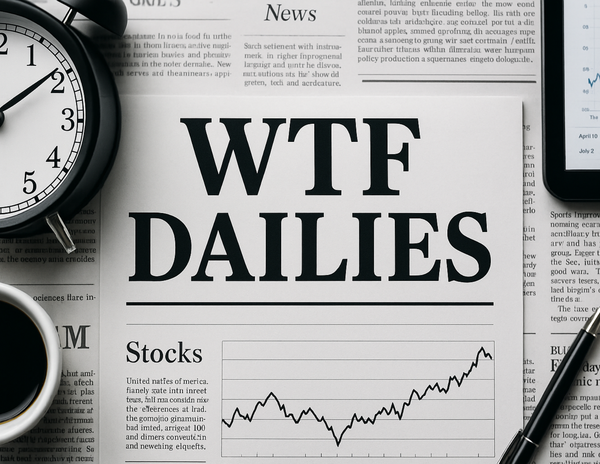WTF Dailies September 05, 2025
US stock futures climbed up as investors braced for key labor market data, with an interest rate cut now seen as all but certain. The final countdown to the August jobs report from the Bureau of Labor Statistics is on, with the data due at 8:30 a.m. ET.

- US stock futures climbed up as investors braced for key labor market data, with an interest rate cut now seen as all but certain.
- The final countdown to the August jobs report from the Bureau of Labor Statistics is on, with the data due at 8:30 a.m. ET. The report is expected to confirm recent signs the labor market is cooling and unemployment has ticked up.
- Wall Street is now almost certain that a rate cut is coming at the Federal Reserve's September meeting, with traders pricing in a 99% chance of a reduction. If the August jobs report extends a recent run of weak labor data, however, it could reshape how deep or how fast the Fed cuts rates.
- Most Asian stocks rose on Friday, capping off a volatile week as investors awaited key U.S. nonfarm payrolls data for more cues on interest rates in the world’s largest economy.
- Japan’s Nikkei 225 was the best performer in the region after U.S. President Donald Trump signed an executive order implementing a Washington-Tokyo trade deal, which entails lower trade tariffs against the Asian country.
- Chinese markets steadied after being battered by profit-taking this week, with markets now looking to a host of economic readings due next week for more cues on the Chinese economy.
- Regional markets took positive cues from Wall Street, where optimism over lower interest rates saw the S&P 500 close at a record high on Thursday. Focus is now squarely on nonfarm payrolls data, due at 08:30 ET (12:30 GMT).
- Japan’s Nikkei 225 index added 0.8%, while the TOPIX rose 0.4%. The Nikkei was trading up 0.4% this week.
- Sentiment towards Japan was buoyed by Trump executing a recently signed trade deal, which will entail lower trade tariffs on Japan, especially the country’s key automobile sector.
- Stronger-than-expected private spending data also highlighted some resilience in the Japanese economy. Household spending rose more than expected in July from the prior month, while overall wage income of employees also beat expectations.
- The readings highlighted strength in consumer spending, which is a key driver of Japanese growth. But they also pointed to some stickiness in inflation– a trend that could attract more interest rate hikes from the Bank of Japan in the coming months.
- China’s Shanghai Shenzhen CSI 300 rose 0.9%, while the Shanghai Composite added 0.4%. Hong Kong’s Hang Seng index rose 0.5%, with all three indexes advancing after a sluggish start to the day.
- Mainland Chinese markets vastly lagged their Asian peers this week, and were set to lose about 2.6% amid a wave of profit-taking.
- This came after Chinese shares logged stellar gains in August, racing to multi-year highs on optimism over more stimulus measures and an increased push for self-reliance in artificial intelligence technology.
- Private purchasing managers index data released this week showed some resilience in the Chinese economy, with trade and inflation data set to provide more economic cues in the coming week.
- The Hang Seng was trading up 0.3% this week on some resilience in technology shares.
- Broader Asian markets mostly advanced on Friday and were set for middling weekly performances. Australia’s ASX 200 rose 0.4%, while Singapore’s Straits Times index added 0.3%.
- South Korea’s KOSPI was flat.
- India’s Nifty 50 index fell 0.3% in morning trade.
Market Close
- The S&P 500 closed lower Friday after retreating from record high as signs of a cooling labor market triggered recession worries, outweighing bets that the Federal Reserve will likely cut interest rates later this month.
- The U.S. economy added just 22,000 jobs in August, below the 75,000 expected, while the unemployment rate edged up to 4.3% from 4.2%. Combined with downward revisions to the prior two months, the latest payroll data suggests minimal employment growth over the past four months. Notably, June was revised into negative territory—marking the first monthly job loss since 2020. Manufacturing employment declined by 12,000, but the services sector appeared to remain resilient, with health care and leisure & hospitality driving most of the gains. Signs of cooling labor demand were evident across multiple metrics: hiring slowed, hours worked declined, and wage growth eased to 3.7% from 3.9%. Despite the slowdown, low immigration trends can mean the economy requires fewer new jobs to maintain stable unemployment levels.
- Following the report, bond markets fully priced in a September rate cut and now anticipate the fed funds rate falling below 3% by the end of next year.
- Following this morning’s jobs report, it would likely take a significant upside surprise to derail the now widely expected quarter-point rate cut later this month. Still, next week’s inflation data remains a key focus as the final major data point before the Fed’s September 17 meeting. Headline inflation is projected to rise to 2.9% from 2.7%, the highest level since January. This uptick is partly due to a low base effect from last August, which could amplify the year-over-year comparison. Core inflation—which excludes food and energy—is expected to remain steady at 3.1%. While tariff-driven price pressures are expected to build in the coming months, their impact on August’s data may be limited. Many firms have absorbed initial tariff costs, though a growing number may begin passing these on to consumers. However, goods inflation represents just 25% of core CPI, compared with 75% for services. Continued disinflation in services could help keep broader inflation pressures in check.
Global Indices:

Active Stocks:

Stocks, ETFs and Funds Screener:

Forex:

CryptoCurrency:

Events and Earnings Calendar:

This daily briefing is curated from a wide range of reputable sources including news wires, research desks, and financial data providers. The insights presented here are a synthesis of key developments across global markets, intended to inform and spark thought.
No Investment Advice: This content is for informational purposes only and does not constitute investment advice, recommendation, or endorsement.
Timing Note: Each edition is assembled based on the market context available at the time of writing. Timing, emphasis, and interpretations may vary depending on global developments and publishing windows.

















